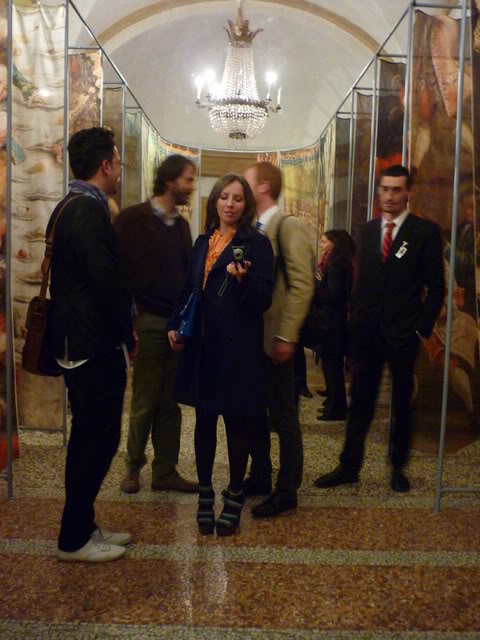


It’s something of a disadvantage to know beforehand that the images in Robert Polidori’s new show are of the palace of Versailles. In contrast to most artists, who make futile attempts to capture the palace’s grandeur in wide-angled panoramas, Polidori’s micro approach means that interior treasures of Versailles can be appreciated in their own right.
Though the photographs are quite restricted in their spatial focus, they remain visually demanding; partly because of the decorative nature of the palace, but also because of Polidori’s excellent framing. Cut off’s which appear arbitrary – the tops of chairs, for example - are beautifully juxtaposed onto intricate wallpapering, wooden mouldings, and richly textured paintings. The overall effect provides a striking and novel perspective on one of the most overexposed historical buildings.
This is in part possible because Polidori is a meticulous technician, but equally because he still uses a large format film camera. Large format makes an immeasurable difference to the final print, so much so that one wonders why photographers bother with digital at all. Images of nothing more than boldly coloured wallpaper are so lifelike and vivid that they make the plain wall of the gallery look like an imitation of the real thing.
The intellectual premise lurking behind these paintings is one of restoration and revisionism. This is intriguing given that Polidori is primarily known for his exquisite, though controversial, images of destruction – Chernobyl and post-Katrina New Orleans. Nevertheless, it is evident that change, natural or manmade - the selective process of curation or the destructive force of nature – is a theme important to Polidori’s work.
There is also the question of how the act of restoration is in some way subsumed by a modern-day nostalgia complex, and though this complex acts as a saviour to historic buildings, it is also a plague, as the saving is typically accompanied by shocking anachronism. Polidori’s cleverly framed images highlight both our fascination with these antiquities while also gently mocking the anachronistic intrusions.
There is a photograph, not in the current exhibition, of a ground-floor room in the palace, where Jérome-Martin Longlois’ copy of David’s giant, Death of Marat, rests on the floor waiting to be hung. Longlois’ painting, and subsequently Polidori’s photograph, make an absolute mockery of all Versailles symbolises; Marat, of course being one of the most famous French Revolutionaries as well as a supporter of the abolition of the Borboun Monarchy, the very kings who built Versailles.
For a bit of 21st century irony, Polidori has taken a witty image of the elaborate panelling in the salon of Louis XV’s daughter, Madame Victoire, highlighting one of Versailles’ many CCTV cameras. This image works on multiple levels: the formal court procedures instituted by Louis XIV meant that the king and queen were nearly always under surveillance, the court acting as 18th century CCTV cameras; and, on another level, it reveals those glaring architectural inconsistencies inevitable in the restoration of any heritage building.
Polidori’s photographs each provide a loaded snapshot of modernity versus history: a reminder that the 21st century Versailles was made by us for us.




1 comment:
I appreciate how these photos offer such unique perspectives within Versailles.
Post a Comment